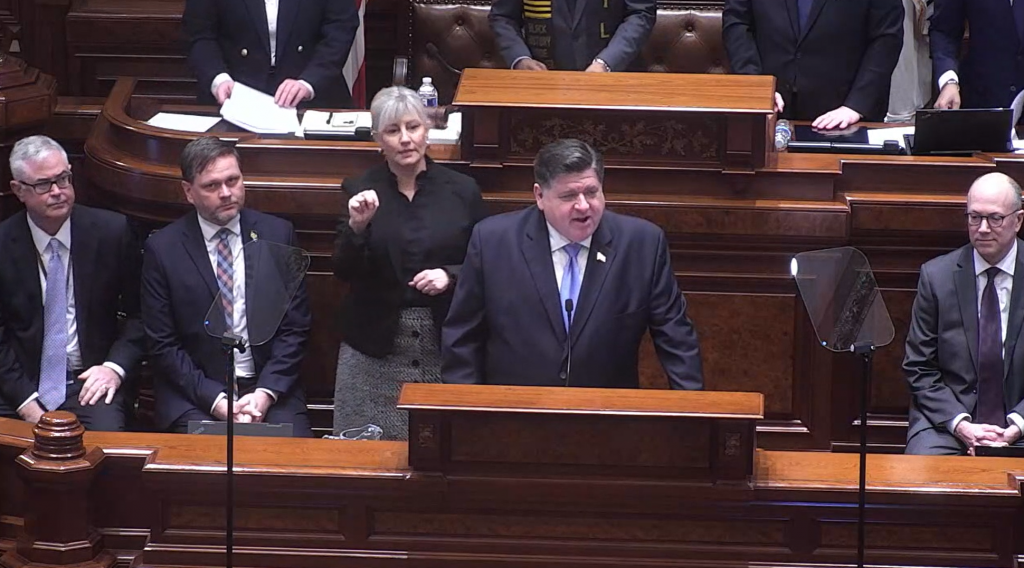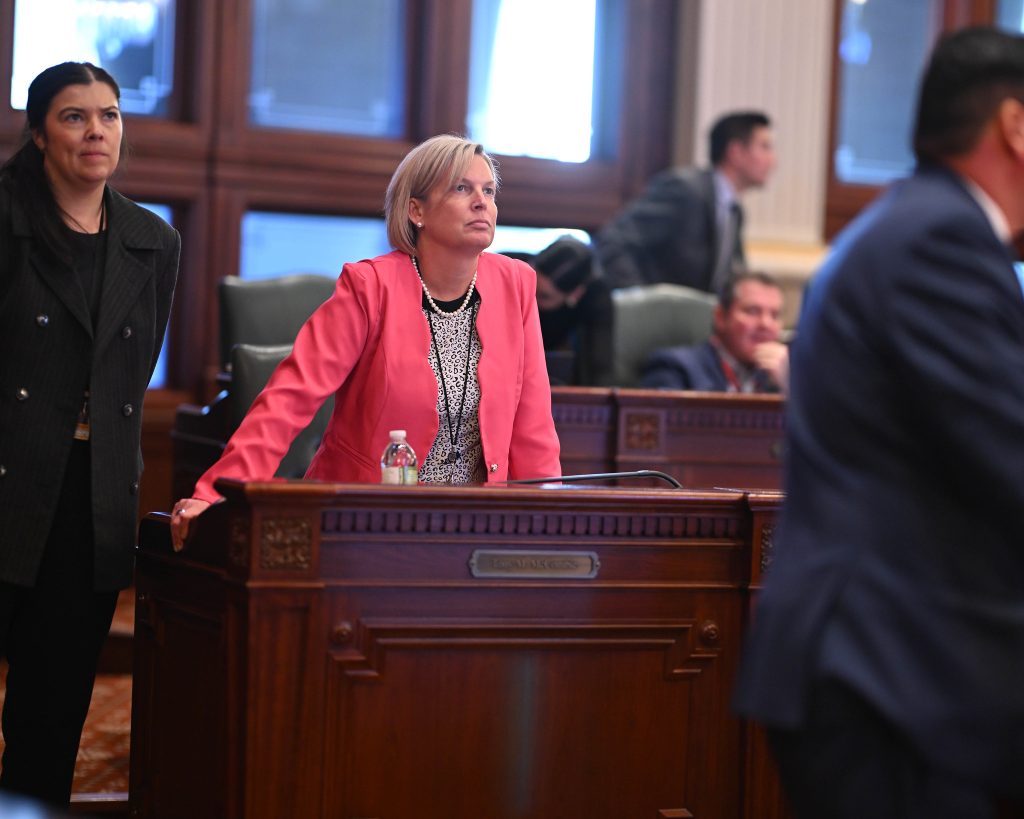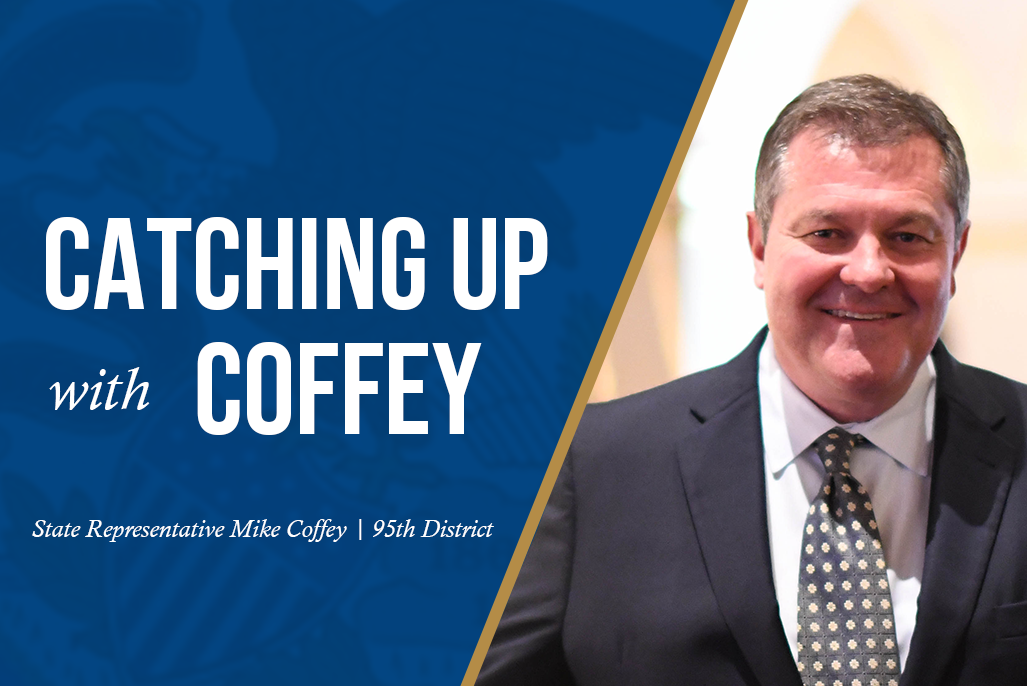State Budget
Pritzker proposes the largest budget in state history. Last year after the budget address, we reported Governor Pritzker had proposed the largest budget in the state’s history. This year, he has outdone himself – breaking last year’s record.

During his speech to the Illinois General Assembly this week, Governor Pritzker unveiled his priorities and spending plan, setting his total FY26 expenditures at $55.235 billion. The new proposal reflects a nearly $2 billion increase in spending over last year, resulting in a 3.7% increase overall. Moreover, the Governor plans to pay for the new spending with yet-to-be-realized revenue, based in part on aggressive projections that have not been confirmed by the Commission on Government Forecasting and Accountability (CGFA), as well as increased taxes and other gimmicks that will require the legislature’s approval.
State spending under Governor Pritzker has grown exponentially since he took office in 2019. When he took over as Governor, state expenditures were $40.3 billion. Each year since we have seen state spending grow and we now have a budget that is $15 billion higher than when he took office.
At a Capitol press conference immediately following the Governor’s budget address, House Republican Leader Tony McCombie declared that the Governor’s massive spending plan was “dead on arrival.” State Representative Mike Coffey said Illinois families need property tax relief, not more financial burdens.

“Illinois families deserve an honest and transparent government – not one that increases spending by $2 billion and masks a $3.2 billion deficit on paper, setting taxpayers up for a potential tax hike on May 31.
I promised at the start of the year that House Republicans would expose and oppose poor public policy, and this budget proposal is just that. It won’t grow our tax base; it will continue to punish businesses and hardworking Illinoisans.”

“I was disappointed by Governor Pritzker’s address to the House of Representatives. As the State Representative for Illinois’ 95th District, I will continue to fight for responsible economic growth through meaningful reform and sound policy—not tax hikes. Illinois families need property tax relief, not more financial burdens.”
CGFA details the underperformance of Illinois’ economy. In the same week that Gov. Pritzker was suggesting an FY26 budget based on sunny economic projections of statewide economic activity and tax revenues for the coming year, the nonpartisan Commission on Government Forecasting and Accountability (CGFA) shared an economic forecast with lawmakers that on many facets painted a different picture.
Working with Moody’s Analytics, CGFA prepared 20-year charts that showed the long-term underperformance of Illinois, relative to other U.S. states, in the fields of economic growth, job creation, and reduction of unemployment. In all of these variables, the data shows Illinois continuously underperforming the economic performance of the U.S. as a whole. In several key economic sectors, Illinois’ long-term performance has been even worse. Over the past 10 years – a period which has seen several economic cycles, a catastrophic recession, and partial recovery – Illinois has lost jobs in the fields of manufacturing and information technology.
Trend lines like these are significant because they can be used to generate a more realistic view of Illinois’ likely employment picture and payroll-tax-related cash flow in the near future, including FY26. While it is not possible to create a fully valid medium-term outlook based solely on trend lines, these long-term structural factors and pressures often create a definitive framework for the interpretation of future events. Economic analysts point out that “Illinois manufacturers will face daunting competition in the global marketplace in the long term.” These competitive pressures may continue to result in reduced job growth, lost jobs, and additional supplementary pressures on the community structures and qualities of life in many significant subregions of Illinois. Regions such as Kankakee, Rockford, the south suburban suburbs of Cook County, Decatur, and sections of the Metro-East have already begun to feel the effects of manufacturing decline patterns like these and have not yet recovered from them.
In a similar way, job losses in information technology and in professional services have held back economic activity in greater Chicago. Recent straws in the wind, such as the movement of an entire electronic stock market from Chicago’s Loop to Dallas, show which way things are going.
Illinois job trends point to potentially lower payroll tax payments to the State in both the short-term and long-term. These moneys are paid in by employers on behalf of their employees as individual income taxes. Individual and personal income tax payments have become the chief income driver of Illinois state government. Any threat to this cash flow is something that the General Assembly should take with great seriousness.
Education

Push to ban cellphones in Illinois classrooms. Many states are moving to ban or sharply restrict the use of cellphones by students in classrooms. The devices are seen as distracting to students and creating problems with discipline and awareness. More than twelve states have statewide policies that ban, or severely restrict, cellphone use in classrooms. This list of cellphone-ban states includes the neighboring state of Indiana. This week, the Wisconsin state legislature passed a statewide school cellphone ban. Many other states have recommendations in place that encourage local school districts to adopt cellphone bans.
Illinois has been slow to act on a statewide school cellphone ban. Some Illinois school districts have already taken action locally to ban or restrict cellphones in classrooms. Now, faced with evidence of the growing effects of cellphone culture on young people, the General Assembly will likely debate this issue this spring. Other neighboring states, such as Iowa, have already begun moving in this direction.
Transportation
Still need a REAL ID? What to know about the upcoming requirements in Illinois. The wait for the long-delayed REAL ID plan may finally be coming to an end next year.
Next May, the federal Department of Homeland Security will require that people have a REAL ID in order to access federal facilities – think military bases – and fly on domestic commercial aircraft.
REAL ID has been in the works for more than 20 years, with numerous delays to the official implementation of the special identification put in place in 2005. […]
Now, REAL ID is set to go into effect fully on May 7, 2025, unless there is another delay.
For Illinois, REAL IDs look similar to that of a regular, standard Illinois driver’s license, but with one key difference – a gold star in the upper right denoting the special nature of the ID. Standard driver’s licenses have a phrase at the top that says “Federal Limits Apply.”
How do you get a REAL ID in Illinois?
People can go to their Illinois Secretary of State’s facility in order to receive a REAL ID.
The Secretary of State’s Office requires that anyone who wants a REAL ID must have proof of identity, such as a birth certificate or passport, proof of their Social Security number, two residency documents – such as a utility bill or rental statement – and proof of a signature. Read more from the Peoria Journal Star.
